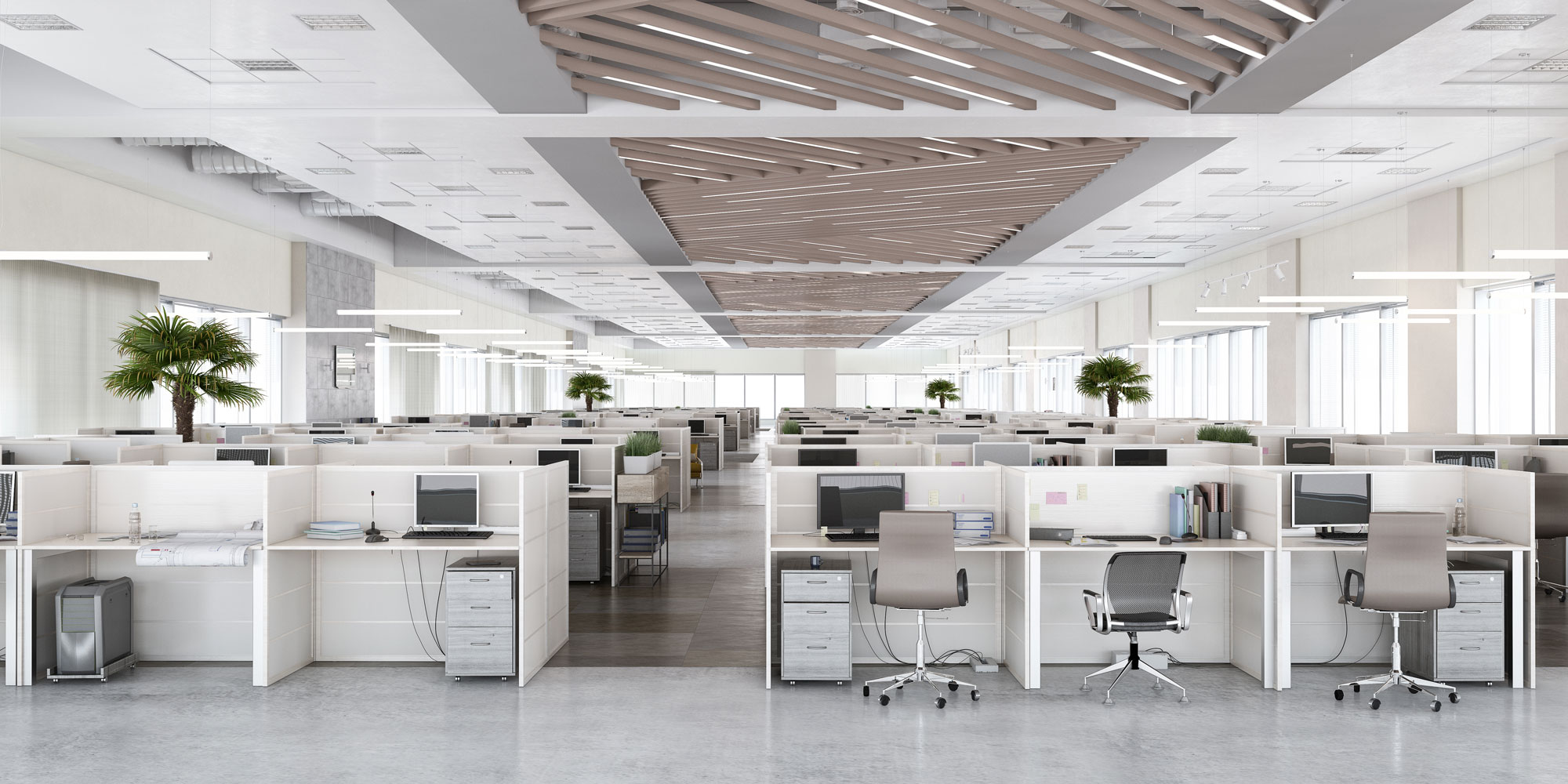Office relocations represent a pivotal moment in any business’s journey. Whether you’re expanding into a larger space to accommodate growth, downsizing to optimize resources, or simply moving to a more strategic location, the process involves far more complexity—and potentially higher costs—than most executives initially anticipate.
Our extensive experience in the commercial services industry has given us unique insight into the true financial impact of workplace transitions, and we’ve found that the most significant costs often lurk beneath the surface of standard budgeting considerations.
The visible expenses of hiring transportation services, leasing new space, and purchasing updated furniture represent just the tip of the financial iceberg. Beneath these obvious costs lies a complex web of financial implications that can significantly impact even the most carefully planned budgets.
Decommissioning Is Your Largest Hidden Cost
Here is a secret few will share about relocating: most of your relocation costs are not in transitioning your belongings to the new space. Emptying or decommissioning your office space typically constitutes a significant portion of your budget, sometimes adding up to 3-5 times that of the actual relocation itself.
All too often, businesses focus their time and attention on operating their core business while also concentrating on the “new” space and the endless details and decisions required to prepare it. The “old” space, as well as the furniture in it, is frequently overlooked. If you think you can just leave the furniture and the cleaning for the landlord, you are mistaken.
The problem is that neglecting to properly decommission the old office space can leave you exposed to a wealth of unnecessary costs. The majority of commercial leases contain very specific requirements about how the old space needs to be turned back over to the landlord. If these requirements aren’t met, your deposit hangs in the balance. The removal of unwanted furniture and equipment can be an expensive undertaking, especially if not handled properly, and your landlord is well within their rights to apply your deposit to those costs.
Most commercial leases require that the occupied space be left “broom swept.” This means all contents, freestanding furniture, workstations, office/IT equipment, shelving, racking, etc., must be completely removed, and all floors left cleared of debris and vacuumed. That also means following through on details like removing any data/IT cabling that you’ve added during your tenancy. Overall, you need to return the space to its original condition prior to your occupancy.
Decommissioning With BMS Commercial Services
BMS Commercial Services offers professional decommissioning and removal services specifically designed to address this challenge. We manage the entire end-of-life process for your equipment and assets with secure and efficient handling that ensures compliance with lease requirements. Our partnerships with companies that can reuse or recycle your old furniture not only reduce waste and environmental impact but can potentially offset your costs as well. From planning to execution, our comprehensive approach minimizes disruption to your operations while protecting you from the unexpected expenses that often arise during this critical phase of relocation.
The Productivity Impact
Beyond the physical aspects of decommissioning, one of the most significant hidden costs of an office move manifests in something that doesn’t appear on any invoice: lost productivity. During a typical office relocation, employee productivity doesn’t just dip slightly—it often declines dramatically in the weeks before, during, and after the move.
In the weeks leading up to a move, employees inevitably dedicate hours to packing personal belongings, sorting through accumulated materials, and participating in transition-related meetings. The actual moving days create operational disruptions for departments or entire organizations. Then comes the adjustment period—those weeks where employees navigate new commutes, adapt to unfamiliar floor plans, and reestablish disrupted workflows.
The opportunity cost of moving during business hours is substantial. Low demand explains why it’s much cheaper to move on a weekday: people try to avoid the disruption of packing up their things and relocating during office hours. For companies, not only is it disruptive to staff schedules, but there’s an opportunity cost to pausing business operations while you move.
Technology Transfer Challenges
Technology infrastructure relocations have become increasingly complex as businesses rely more heavily on sophisticated digital systems. What appears straightforward on paper—disconnecting, moving, and reconnecting equipment—inevitably encounters complications that extend downtime and inflate costs.
New systems failing during or after a move is a common occurrence. Teething problems with new network equipment are typical, and in worst-case scenarios, sudden IT failures at a new office can take days to identify, isolate, and fix. Issues could range from buggy keycard access systems to server malfunctions, all of which translate to lost business hours during a vulnerable time for any company.
Even simple office networks require professional installation and cabling to ensure everything works correctly. More complex office setups need skilled IT engineers to install server racks, patch panels, and route cabling through walls and flooring to ensure high-speed network connectivity throughout the space.
3 Direct Moving Costs That Add Up
When planning an office move, carefully consider these direct costs: transportation services, equipment handling, legal fees, furniture purchases, space customization, IT setup, and transit insurance.
- Packing and Moving Equipment
Depending on the type of equipment your office uses, the labor and packaging costs involved in boxing up your hardware, furniture, and equipment can vary significantly. Workstations and desktops are relatively straightforward to pack, but high-value and heavy equipment may require special attention.
One of the more obvious costs of relocating an office is paying for professional movers to physically transport your equipment from the old site to the new one. Distance is as much a factor as the amount of equipment being moved, and there’s always a risk that items could be damaged in transit.
- Legal Fees
Office relocations involve considerable paperwork, and where there’s paperwork, there are attorney’s fees. If you’re purchasing commercial real estate, or sometimes even just leasing, it’s usually incumbent on you to carry out local surveys and inspections to insure the new property.
- New Furniture and Decoration
Another obvious expense—especially for business owners stepping into a non-furnished office—is new furniture. The purchase of chairs, desks, storage, and kitchen appliances is typically unavoidable.
Even newly built offices require a degree of customization to make them your own, whether you decide to repaint and install new carpets or add your own branding and logos. Older offices can be particularly expensive, as wear and tear may have caused damage to existing fittings.
What Are The Potential Outcomes of Office Decommissioning?
When dealing with the furniture and equipment in your current space, there are three possible outcomes to consider.
- Net Positive: The optimal outcome is achieving a “net positive” result, where the liquidation of furniture and/or equipment yields a positive cash return. This is clearly the best scenario to strive for.
- Net Zero: To attain “net zero,” you can choose to donate contents to a local charity for repurposing or have a third-party company remove them at no cost. While you don’t make money on the transaction, you save the potential cost of having to remove the contents yourself.
- Net Negative: For items that simply don’t have much or any value and need to either be recycled or disposed of, you’ll find yourself in a “net negative” position. Although there’s a nominal return for recycled items, the cost of disposing of valueless items leaves you with a fee that an office decommissioning expert can help minimize.
Organizing the New Space
Anyone can fill an empty room with desks and chairs, but creating the ideal layout for a new office space takes expertise. Desk arrangements should be space-efficient, common areas should take advantage of natural light, and meeting rooms should strike a balance between openness and privacy.
Though staff are usually happier in a new office, there can be a short-term impact on productivity, especially if the move is mishandled. Disruption to the usual routine, a change in commute, and a shift in sleeping patterns can all contribute to a period of adaptation that can take weeks to overcome.
Benefits of Professional Transition Management
Companies that focus all their time and effort on the “hard costs” of relocation may be blindsided by the much more important “soft costs” of the move. A transition management expert minimizes your company’s exposure to lost revenue by reducing distractions to your core business and curtailing downtime.
There is an enormous difference between a transition management expert and a standard moving company. Before signing with a relocation company, discuss the decommissioning services they provide. Determine the price for the services you need, and compare that cost with hiring various removal providers. Most commercial movers overlook decommissioning, and this portion of the job can cost many times your relocation fee, depending on how much of your existing furniture you’ll be taking to your new space.
Once you have the transition team in place, establish a facility decommissioning plan and lock in hard dates and deadlines. Make sure the company is reliable and that the personnel have the necessary skills to execute the plan. Often, it’s not worth the risk of going with the vendor offering the lowest bid, as the cost for additional “buy back days” at your old space can quickly eclipse those vendor savings.
The BMS Commercial Services Advantage
At BMS Commercial Services, we understand the complexities of office relocations and provide comprehensive solutions to address both the obvious and hidden costs. Our approach includes.
Comprehensive Pre-Move Planning
We begin with thorough pre-move planning that analyzes workflow patterns, technology requirements, and growth projections to create tailored transition strategies. This planning phase is crucial for identifying potential hidden costs and developing strategies to mitigate them.
Expert Decommissioning Services
Our decommissioning services ensure that your old space is properly cleared and restored to meet lease requirements, protecting your deposit and avoiding unexpected charges. We handle everything from furniture removal and recycling to final cleaning.
Technology Transition Management
Our technology transition protocols ensure critical systems migrate seamlessly with minimal downtime. We coordinate with IT professionals to plan and execute the move of your digital infrastructure, minimizing disruptions to your operations.
Space Optimization
We help design and organize your new space to maximize efficiency and productivity. Our workspace solutions create environments that support your business objectives and enhance employee satisfaction.
Partner With BMS Commercial Services
Office relocations represent both opportunities and challenges for businesses. While the direct costs are often budgeted for, the hidden costs—particularly those related to decommissioning your old space—can significantly impact your bottom line if not properly managed.
By partnering with BMS Commercial Services, you gain access to our expertise in managing these hidden costs, allowing you to focus on your core business while we handle the complexities of your relocation. Our comprehensive approach ensures that your move is executed efficiently, minimizing downtime and protecting your bottom line.
Contact us today to learn how our experienced team can help make your next office move a seamless and cost-effective transition.





